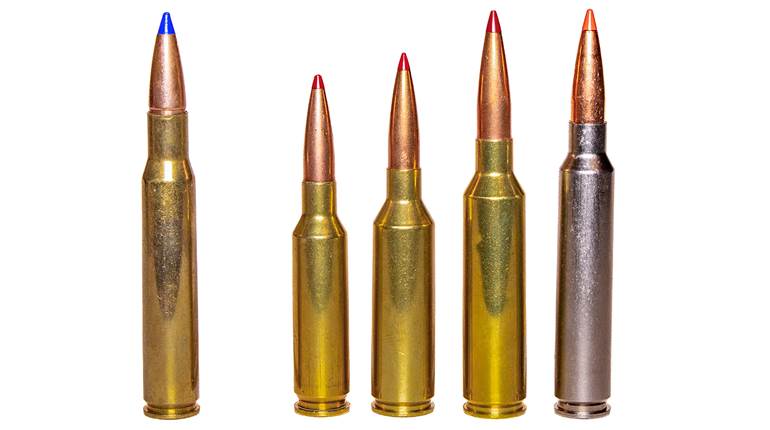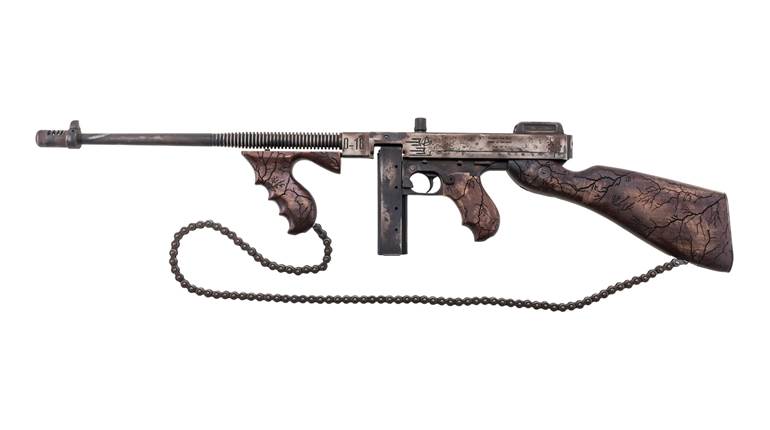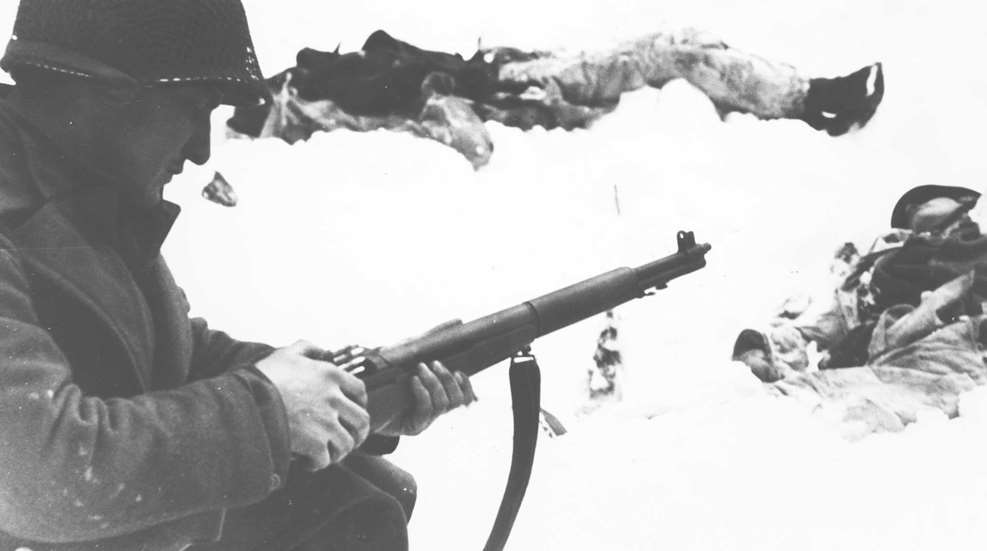
This feature article, "Arms of the Bulge," appeared originally in the January 2005 issue of American Rifleman. To subscribe to the magazine, visit the NRA membership page and select American Rifleman as your member magazine.
As 1944 was nearing an end, the German war effort was in dire straits. The Soviet juggernaut was rapidly advancing on the Eastern Front, and the Fatherland’s cities and industrial regions were being ravaged by Allied bombing. In December 1944, the Allied High Command considered it unlikely that the enemy was capable of mounting any sort of meaningful offensive on the Western Front, especially in the throes of one of the worst winters in recent European history.
Unfortunately, the Allies forgot to inform Hitler. Gambling on a grand master stroke to turn the tide, the Fuhrer had been secretly hoarding much of Germany’s remaining ground forces. The Ardennes Forest, on the German and Belgian border, was considered the least likely spot for attack and, thus, was thinly defended by mainly green American units.
Hitler decided to exploit this weak area and concentrate his attack in the Ardennes. In the predawn darkness of December 16, 1944, the Germans threw 13 infantry divisions and eight armored divisions at the undermanned units of the U.S. 1st Army. The surprise German attack initially resulted in forward elements of the German army immediately engaging the American defenders. Despite heavy casualties and ferocious fighting in brutally cold weather, the G.I.s managed to slow and, eventually, throw back the German onslaught. The term “Battle of the Bulge” was coined to describe the salient in the Allied lines caused by the German offensive.
The crossroads village of Bastogne was seen by both sides as key to the campaign. The veteran U.S. Army’s 101st Airborne Division was rapidly moved to Bastogne to defend the village, but the unit was quickly surrounded by the Germans. The brave American paratroopers held on, and the siege was eventually lifted by elements of General George Patton’s Third Army.
The atrocious weather, shortage of supplies and the desperate German last-ditch assault combined to make the Battle of the Bulge one of the U.S. Army’s hardest-fought and costliest campaigns of the European Theater. Despite extensive casualties and much privation, the resilience and bravery of the American soldier turned the tide and stopped Hitler’s desperate gamble in its tracks. The arms utilized by American troops in the Battle of the Bulge proved their worth on countless occasions.
M1 Rifle
The chief arm used by U.S. infantrymen at this stage of the war was the famed M1 rifle. Developed by an employee of the venerable Springfield Armory in Massachusetts, John C. Garand, the M1 rifle was adopted in 1936. At the time of Pearl Harbor, the M1 was in short supply. Increased production at Springfield Armory and Winchester Repeating Arms Co. eventually met demand and, by the time of the Battle of the Bulge, the U.S. Army was fully equipped with the Garand rifle.
The M1 rifle was a gas-operated semi-automatic chambered for the standard .30-cal. (.30-’06 Sprg.) cartridge and utilized an eight-round en bloc clip. The rifle weighed about 10 lbs. As the M1 began to be issued in increasing numbers and utilized in combat, it gained an enviable reputation as a dependable, reliable and accurate rifle.

The M1 was issued with a bayonet, either the M1905 (16" blade) or the M1 (10" blade). A rifle grenade launcher, the M7, was developed for use with the M1, but the rifle could not fire semi-automatically with the launcher attached. This resulted in a number of M1903 bolt-action rifles remaining in use as grenade-launching platforms.
The United States was the only nation to equip its infantry primarily with a semi-automatic service rifle during World War II. This proved an edge to our guys in the often confused and desperate fighting during the Battle of the Bulge. By the time of the Ardennes campaign, the Germans had developed some modern arms, such as the StG 44 SturmGewehr select-fire assault rifle and the Gewehr 43 semi-automatic rifle. However, these arms were only fielded in limited numbers, and the main German infantry weapon was the bolt-action Mauser Karabiner 98k rifle.
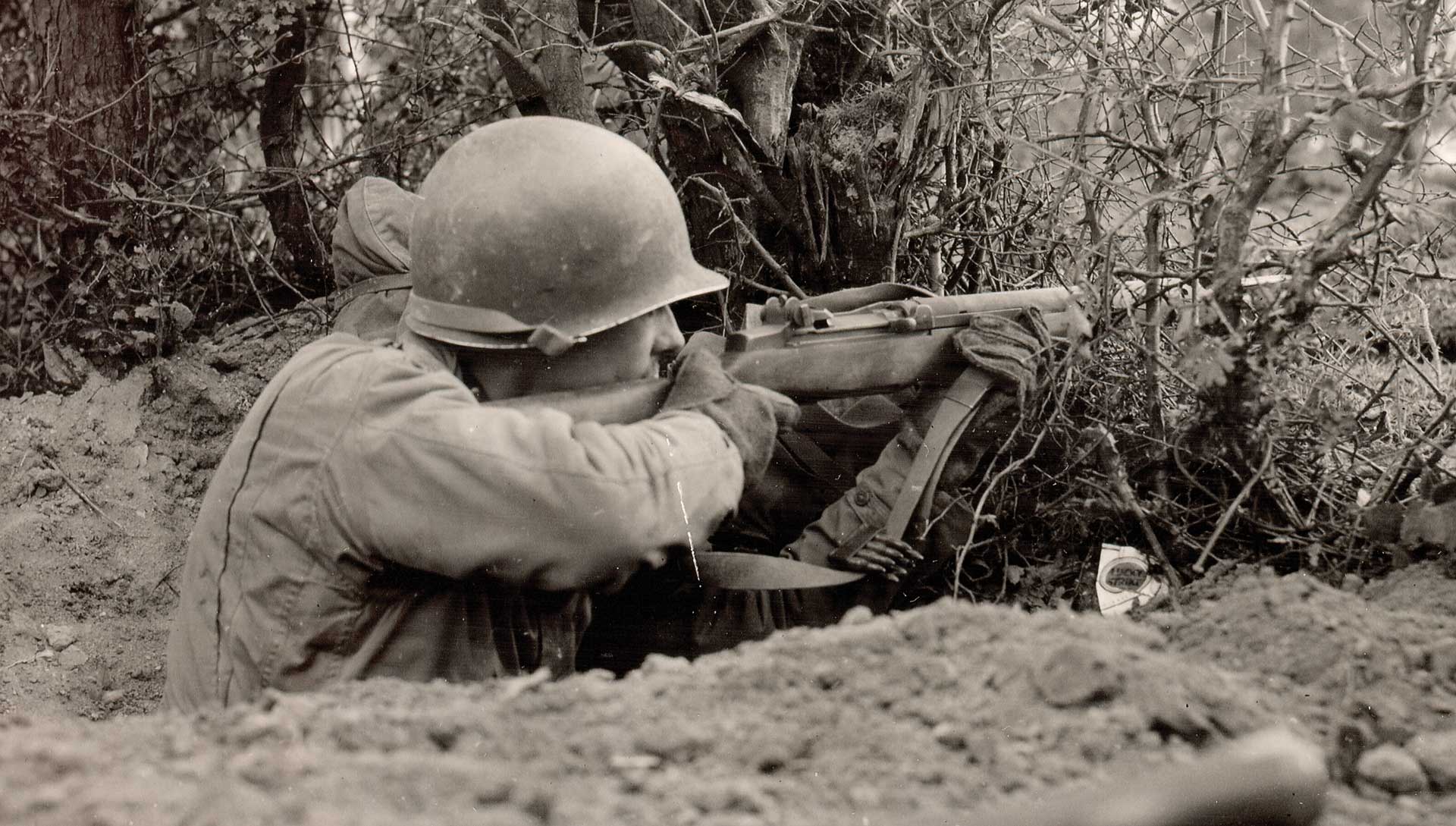
American G.I.s were grateful for the firepower of the semi-automatic M1, rather than being saddled with a bolt-action rifle that was little different than those utilized a quarter-century earlier in the First World War.
While not perfect, the M1 Garand rifle was clearly the most effective standard issue service rifle of the Second World War. Its performance during the Battle of the Bulge and throughout countless other engagements during the war only added to its luster.
M1 Carbine
Just before the Second World War, the U.S. Army recognized the need for a small, lightweight arm that could be provided to troops whose primary duties required them to man heavy and cumbersome arms such as mortars and bazookas. The realities of modern warfare included the increasing employment of airborne troops and armored columns. Therefore, unexpected attacks by paratroopers or the rapid advance of tanks could theoretically result in such troops being engaged by hostile forces at almost any time.
The M1 rifle was not an ideal arm with which to equip such personnel due its size and weight. In the past, such troops were typically issued handguns, but handguns are secondary arms and would be of little use against heavily armed assault troops. It was seen that a small, lightweight semi-automatic shoulder arm would be much more effective in such instances than a pistol, and would not unduly encumber such military personnel. To this end, the “U.S. Carbine, Caliber .30 M1,” was adopted in September 1941.

The new semi-automatic weighed only some 51⁄2 lbs. and fired a pistol-size .30-cal. cartridge from a 15-round detachable box magazine.
Soon after the M1 Carbine’s adoption, the United States became embroiled in World War II, and large numbers of the new Carbines were needed to arm the rapidly expanding armed forces. Eventually 10 manufacturers turned out over 6 million Carbines by the end of the war.
Although initially intended mainly for issue to mortar, anti-tank, artillery and vehicle crews, the positive attributes of the carbine, including its compact size, light weight and rapid firepower, made it attractive to many combat infantrymen as well. Carbines were issued to front-line troops in ever-increasing numbers as the war progressed.
By the time of the Battle of the Bulge, large numbers of Carbines were in the hands of combat infantrymen. Despite some limitations regarding range, power and accuracy, the Carbine was popular with many of its users. A version of the Carbine with a folding wire stock was manufactured for airborne use and adopted as the M1A1. The M1A1 Carbine saw use in the hands of members of the Screaming Eagles during the 101st Airborne Division’s heroic defense of Bastogne.
Thompson Submachine Gun
The M1928A1 Thompson submachine gun was the only American submachine gun in production at the beginning of the war, and large numbers were manufactured and issued. The Thompson was manufactured during the war by the Auto Ordnance Corporation and by the Savage Arms Co.
The M1928A1 Thompson weighed a hefty 11 lbs. (more than an M1 rifle), and could fire fully automatically at a rate of approximately 700 rounds per minute or semi-automatically. The M1928A1 was originally issued with a 50-round drum magazine or a 20-round box magazine. By 1944, the bulky, heavy and noisy drum magazine had been dropped from widespread use, and a 30-round box magazine was adopted to replace it.
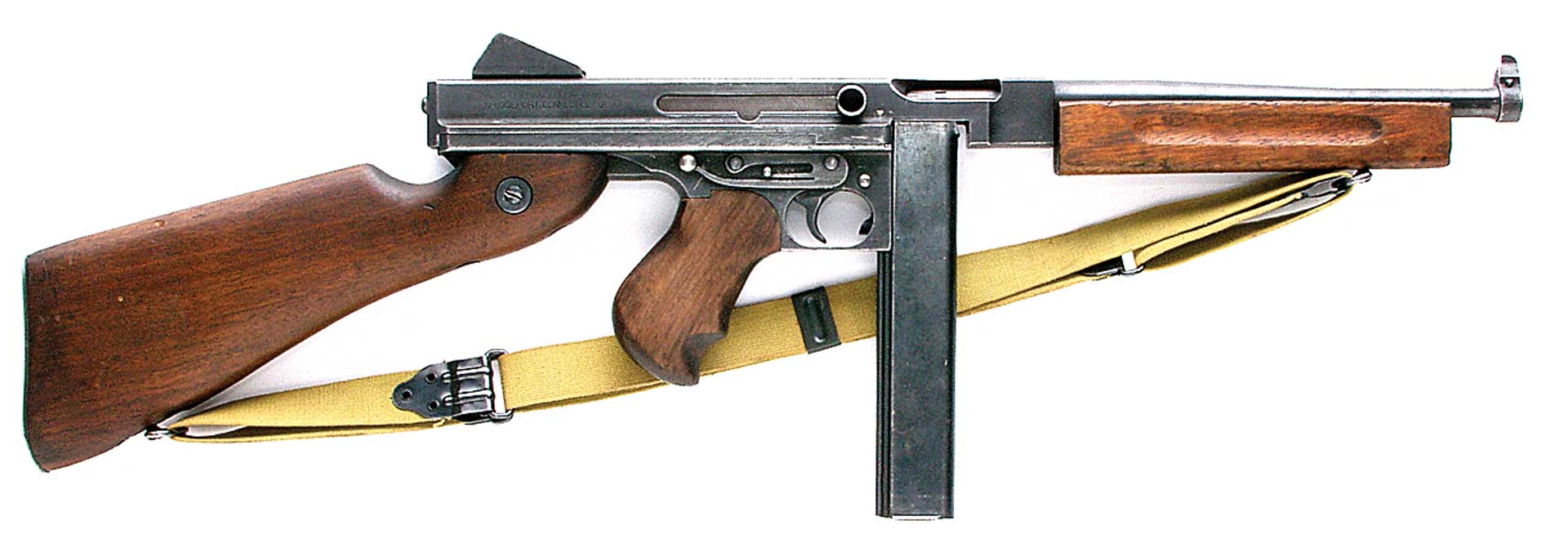
The M1928A1 proved to be reliable and effective, but it was expensive and time-consuming to manufacture. Ordnance engineers looked for ways to simplify it, and, in April 1942, the M1 Thompson was adopted and put into production. The M1 Thompson eliminated the M1928A1’s complicated locking mechanism and utilized a simple blow-back operation. The cocking handle was moved from the top of the receiver to the right side and the compensator was eliminated. Unlike the M1928A1, the M1 could not utilize the 50-round drum magazine and could only be used with the 20-round and 30-round “stick” magazines.
After adoption of the simplified M1, the M1A1 variant was introduced. The M1A1 was virtually identical to its predecessor except that the hammer was eliminated in favor of a fixed firing pin on the bolt. Some M1 Thompsons were converted to M1A1 configuration by substituting the simplified bolt. These converted guns typically had an “A1” added to the original “M1” marking on the receiver. The M1 and M1A1 Thompsons were also manufactured by both Auto-Ordnance and Savage.
Despite its weight, the Thompson was popular with most of its users due to its reliability and firepower. As was the case with other campaigns during the war, Thompsons were used with great effectiveness during the Battle of the Bulge. Even today, many World War II veterans remember the old “Tommy Gun” as a reliable arm that could be counted on when the chips were down.
M3 And M3A1 Submachine Gun
In spite of the Thompson’s effectiveness and popularity, its complexity, cost of manufacturing and weight were problems that needed to be addressed. Other belligerent nations, Allied and Axis, addressed the issue by designing, manufacturing and fielding sub-machine guns that could be made much faster and more inexpensively than traditional submachine guns, such as the Thompson. This was possible, in large measure, through the use of stamped and welded components. The British Sten submachine gun, made in such a manner, attracted the attention of the U.S. military.
A submachine gun, constructed primarily of stamped sheet metal parts welded together, was adopted by the United States in December 1942 as the “Submachine Gun, Caliber .45, M3.” Soon dubbed the Grease Gun due to its strong resemblance to the automotive tool of the same name, it was manufactured by the Guide Lamp Division of General Motors. Guide Lamp had extensive experience in fabricating stamped sheet metal components. This method of construction allowed the M3 to be manufactured for under $20, a mere fraction of the cost of even the simplified M1A1 Thompson.
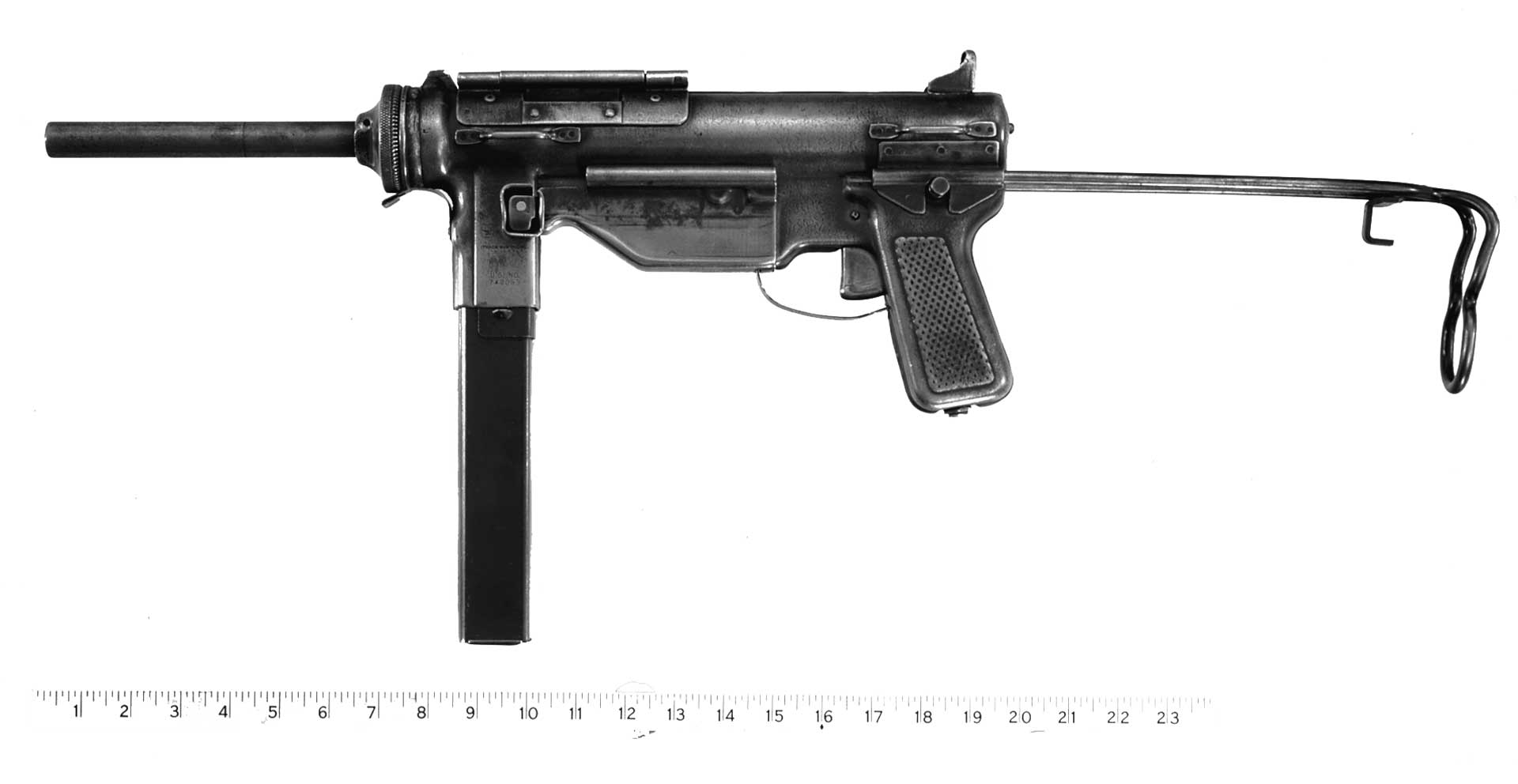
The M3 gun weighed just over 8 lbs. and fired the standard .45 ACP cartridge fully automatically (only) at the rate of approximately 400 r.p.m. This relatively slow rate of fire aided in controlling it and enabled an experienced user to fire single shots if desired. The M3 utilized a 30-round box magazine. The M3 was a compact design and had a wire stock that could be retracted. The compactness of the M3 made it attractive to tankers as it could be stowed in the cramped confines of an M4 Sherman tank or other vehicle.
In December 1944, the M3A1 submachine gun was introduced. This simplified variant differed from the M3 primarily in that the cocking handle was eliminated and firer could retract the bolt by simply inserting his finger in a recess in its top and pulling it to the rear. Unlike the M3, few M3A1 submachine guns were utilized in combat prior to the end of the Second World War.
The first combat use of the M3 submachine gun was in the hands of U.S. Army paratroopers during the D-Day jump. Despite the M3’s crude appearance as compared to the finely machined Thompson, the grease gun proved to be a serviceable submachine gun. Many G.I.s, reluctantly, came to accept the M3—even though it was aesthetically less appealing than the beloved Thompson.
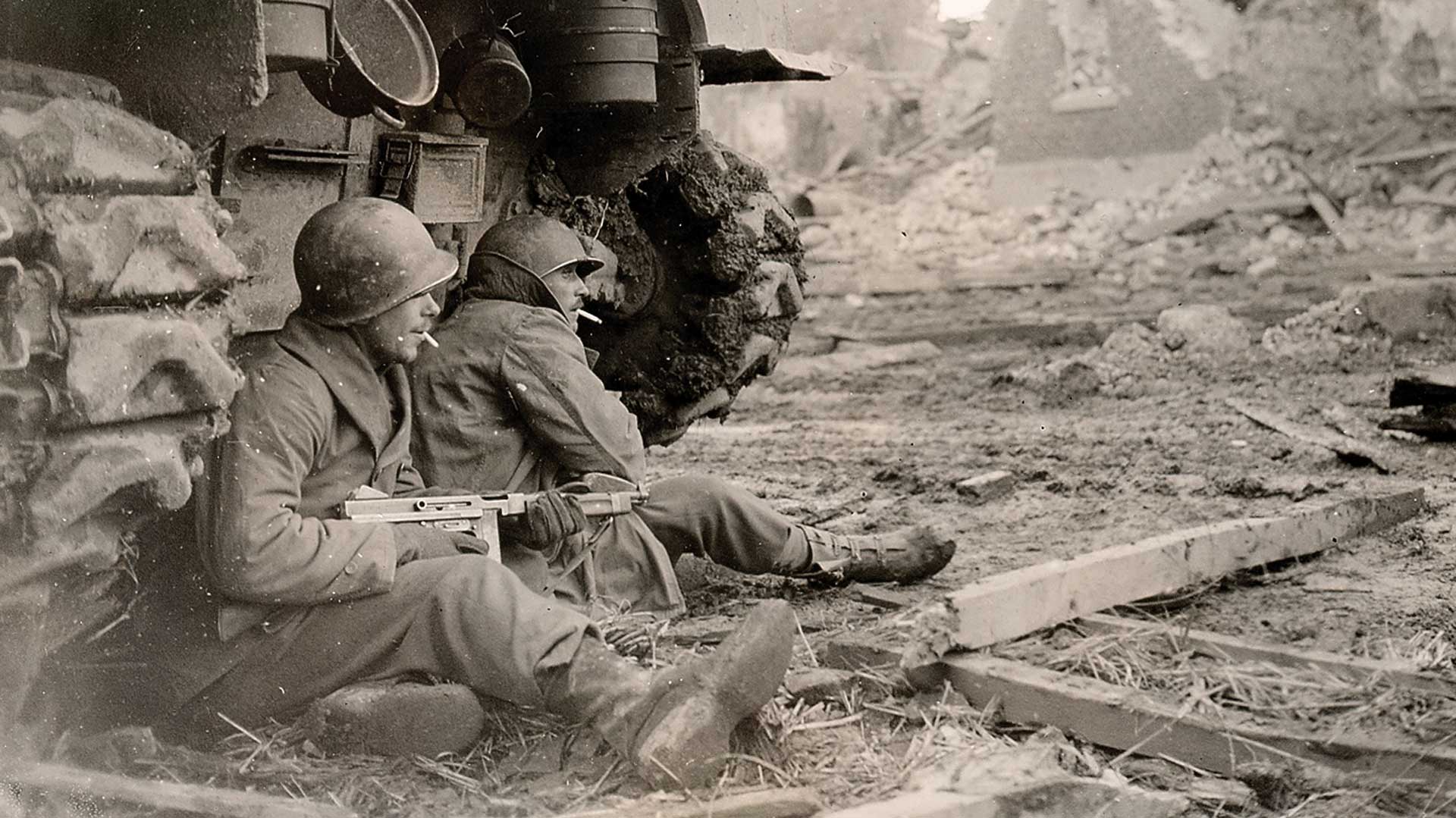
By the time of the Battle of the Bulge, the M3 submachine gun had begun to replace the Thompson in the hands of many U.S. Army soldiers. During the battle, grease guns and Thompsons were used concurrently by our troops to halt the German advance.
M1918 And M1918A2 BAR
During World War II, the Browning Automatic Rifle (BAR) was the standard U.S. military squad automatic weapon. The BAR was the creation of the legendary John Moses Browning and was adopted by the U.S. Army in 1918. The original variant, the M1918, saw only a modicum of use in the closing stages of the First World War. Despite its limited use, the BAR proved to be the best arm of its type, and it remained the standard U.S. Army squad automatic weapon after World War I. Just prior to World War II, the M1918A2 variant was adopted, which differed from the original M1918 BAR primarily in the incorporation of a folding bipod on the flash hider and the fact it could fire only fully automatically (the M1918 was selective fire).
The M1918A2 BAR weighed almost 20 lbs. and fired the standard .30-cal. (.30-’06 Sprg.) cartridge at the rate of 300-450 r.p.m. (slow rate) or 500-650 r.p.m. (fast rate). The BAR utilized a detachable 20-round box magazine. Many of the earlier M1918 Browning Automatic Rifles were converted to M1918A2 configuration. During World War II, the BAR was manufactured by International Business Machines (IBM) and New England Small Arms.
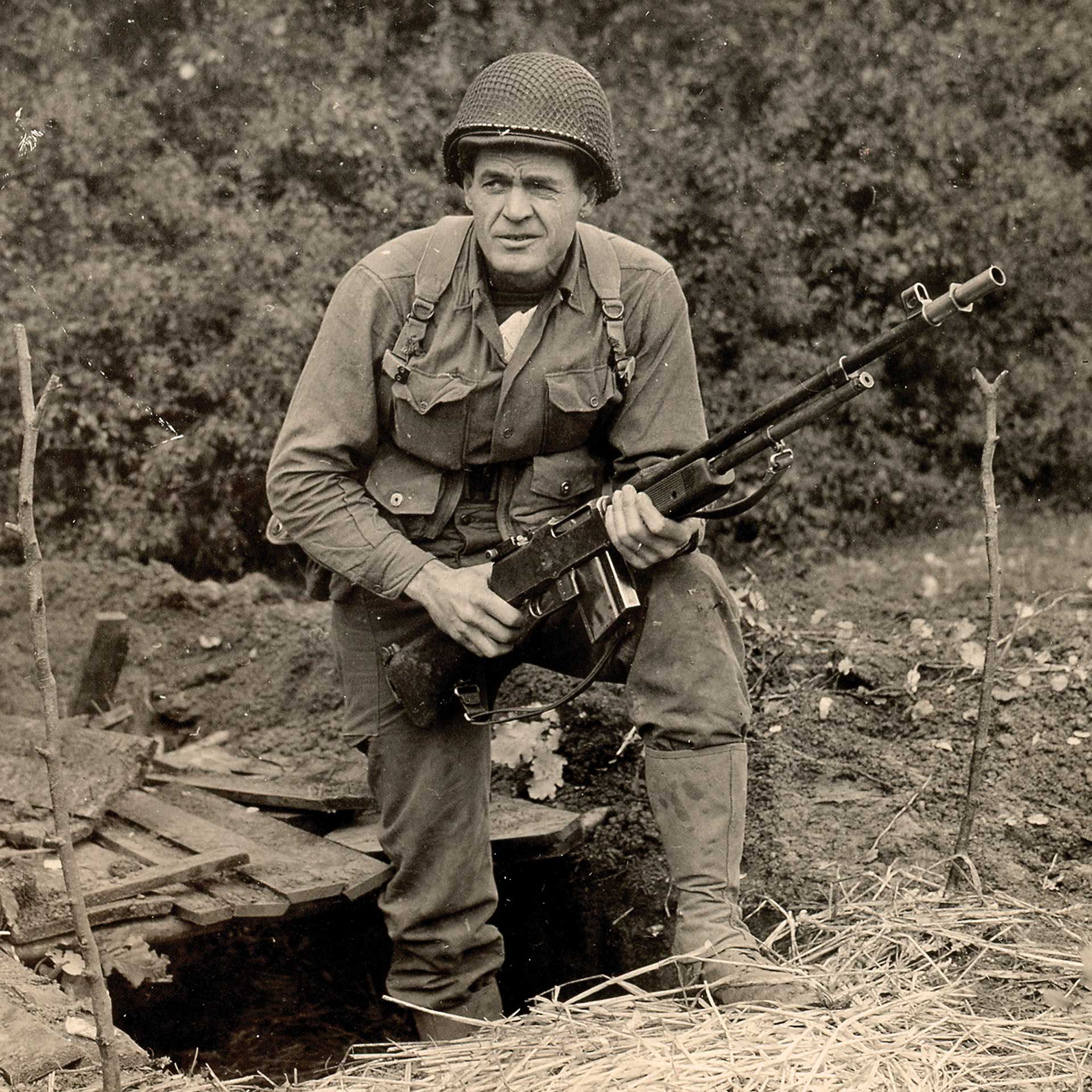
The BAR combined the portability of a rifle with the firepower of a machine gun and bridged the gap between the semi-automatic M1 rifle and the .30-cal., crew-served machine guns, such as the M1917A1 and M1919A4. Despite its popularity, the BAR had some shortcomings. As was the case with the Thompson, the BAR was essentially state-of-the-art at the time of its adoption.
However, by the Second World War, the BAR had been surpassed in many ways by other arms, such as the British Bren. Unlike the BAR, which had a finely machined receiver, many of these other designs utilized a number of manufacturing shortcuts—including the use of stamped parts. In addition, these later arms had other advanced features including quick-change barrels. In contrast, the BAR was expensive and time-consuming to manufacture and had a number of other drawbacks, including excessive weight and the limited 20-round capacity magazine.
Despite these factors, the BAR was generally well-liked by its users due to its dependability and firepower, and it gained an enviable reputation as one of the premier American infantry arms of the war.
M1911A1 .45 Pistol
For the average American soldier during the Battle of the Bulge, the M1 rifle, Thompson and BAR were the primary arms used against the Germans. However, in the close confines of a perimeter foxhole on a dark winter night in the Ardennes, many G.I.s were comforted with the presence of the venerable .45 automatic pistols on their belts or tucked inside their field jackets. While the carbine was intended to replace the pistol in front-line service, that didn’t happen. Despite being suitable only for short-range defensive use, handguns were issued in large numbers during the Second World War.
The standard American service pistol was the M1911A1 semi-automatic pistol. The M1911A1 was a slightly modified version of the Colt M1911 pistol that was invented by the prolific John M. Browning and adopted by the U.S. Army in 1911. The pistol was chambered for the .45 ACP (Automatic Colt Pistol) cartridge, and utilized a detachable seven-round magazine housed in the butt. The .45 ACP possessed potent short-range stopping power.
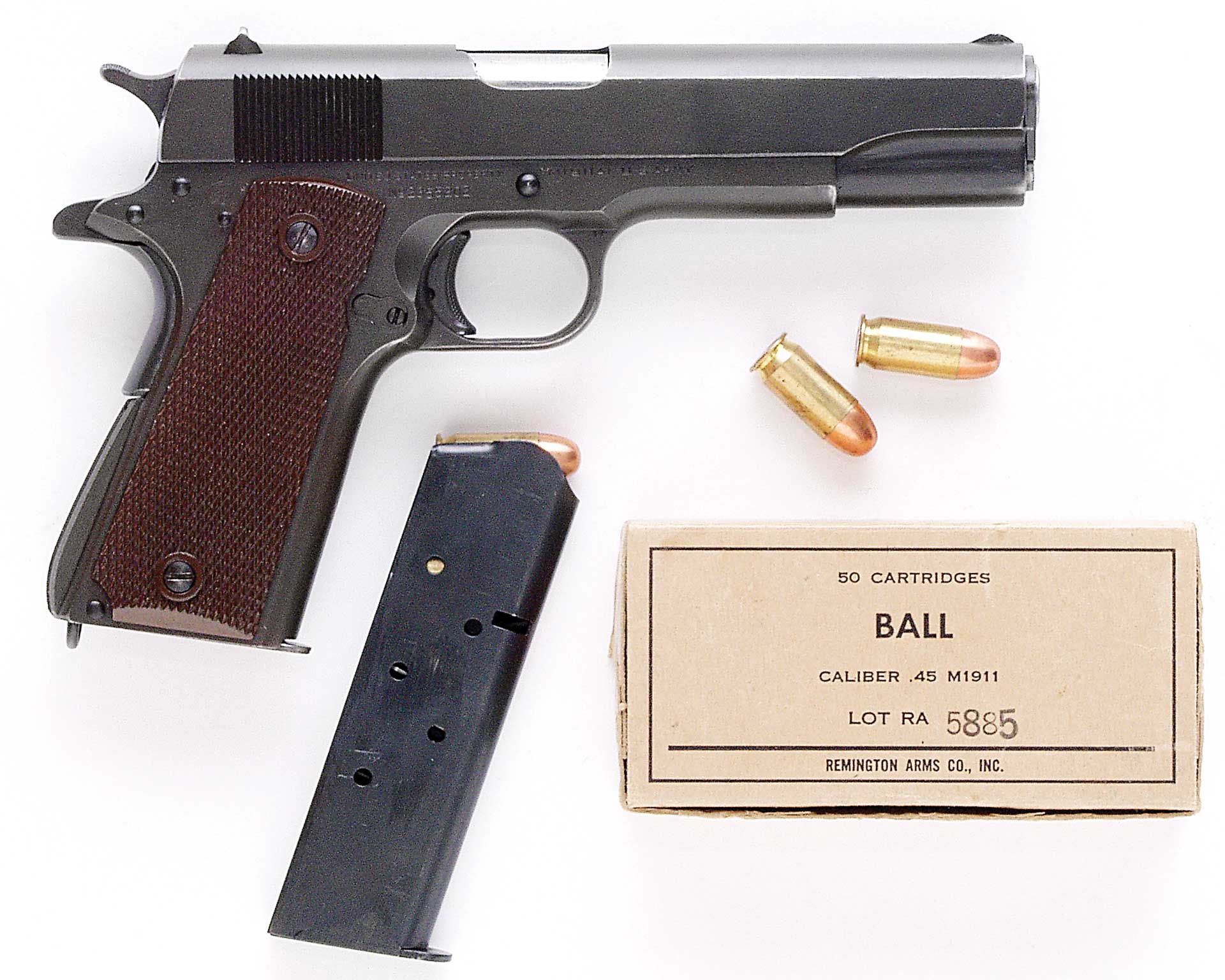
Large numbers of M1911 pistols were manufactured and issued in the First World War. Most were made by the Colt Patent Firearms Manufacturing Co. and lesser numbers by Springfield Armory and Remington-UMC. The M1911 remained the standard American military pistol after World War I, and many were refurbished between the wars. The M1911A1 variant was introduced in 1926 and differed from the original M1911 in only minor ways, including a shorter trigger and slightly modified sights.
When the United States entered World War II, contracts were given to several firms for production of M1911A1s. These entities were Colt, Remington-Rand, Ithaca, Union Switch and Signal Co. and the Singer Company (which only made a small Educational Order of 500 pistols) Large numbers of earlier M1911 pistols were also refurbished and re-issued.
The United States issued handguns in greater numbers than most other nations during the war. Handguns, primarily M1911/M1911A1 pistols, were widely carried by officers, NCOs and many enlisted men, especially paratroopers and tankers. Despite its usefulness only for short-range combat, the .45 was extremely popular, and it was highly coveted by many combat infantrymen.
Other Arms
While the rifles, carbines, submachine guns and pistols were the primary small arms of the campaign, they were not the only ones utilized by American G.I.s during the Battle of the Bulge. One that saw limited use was the 12-ga. trench gun, such as the Winchester Model 97 or Model 12. While combat shotguns saw much wider use in the Pacific Theater than in Europe, some of these weapons were utilized during the Bulge, mainly to guard the German prisoners captured during the campaign.
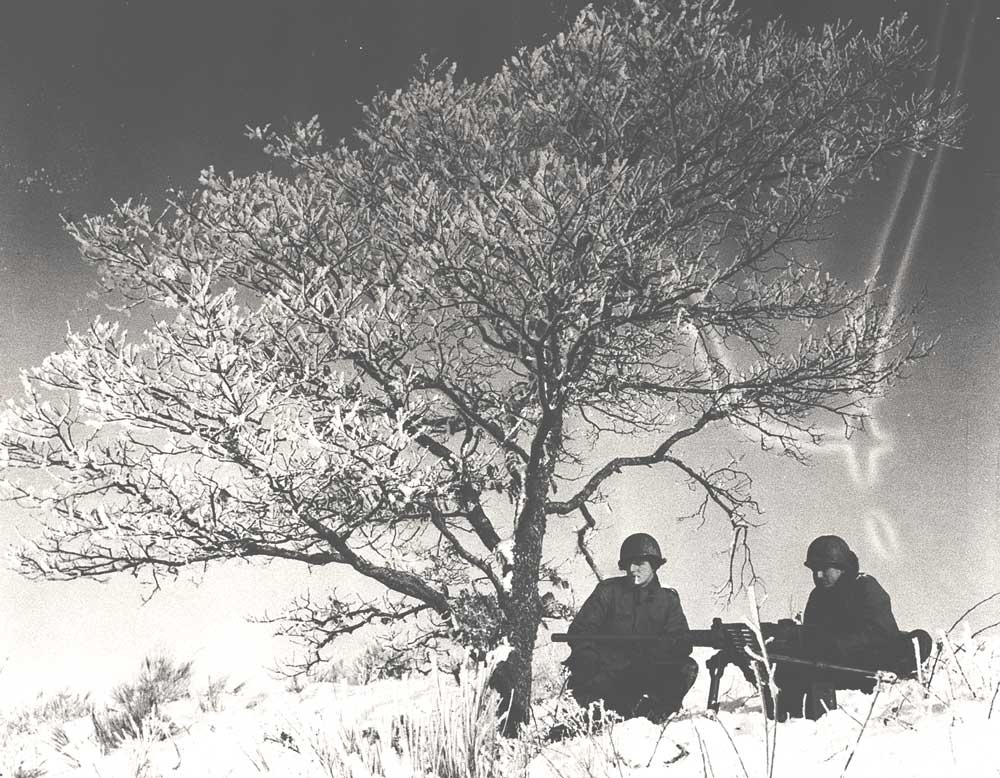
As stated, some M1903 rifles were utilized in the campaign, primarily to launch rifle grenades, including anti-tank and fragmentation grenades. In addition, the telescopic-sighted Remington M1903A4 was the U.S. Army’s standard World War II sniper rifle, and a number saw action during the Battle of the Bulge.
While outside the scope of this article, on the other end of the spectrum were the heavier infantry weapons used in the Battle of the Bulge. These included crew-served machine guns, primarily the .30-cal. water-cooled M1917A1, the .30-cal. air-cooled M1919A4 and M1919A6, and the heavy .50-cal. M2 machine gun. These effective weapons were used in conjunction with anti-tank rocket launchers (Bazookas) and 60 mm and 81 mm mortars. In addition to these various small arms, tanks and artillery played key roles in the Bulge campaign.
Stopping Them In Their Tracks
During the Battle of the Bulge, the small arms used by tenacious and brave American G.I.s proved their worth in the frozen Ardennes during one of the pivotal battles of the war. Anyone doubting the mettle of the American fighting man, or his arms, need look no further than the outcome of the Battle of the Bulge.
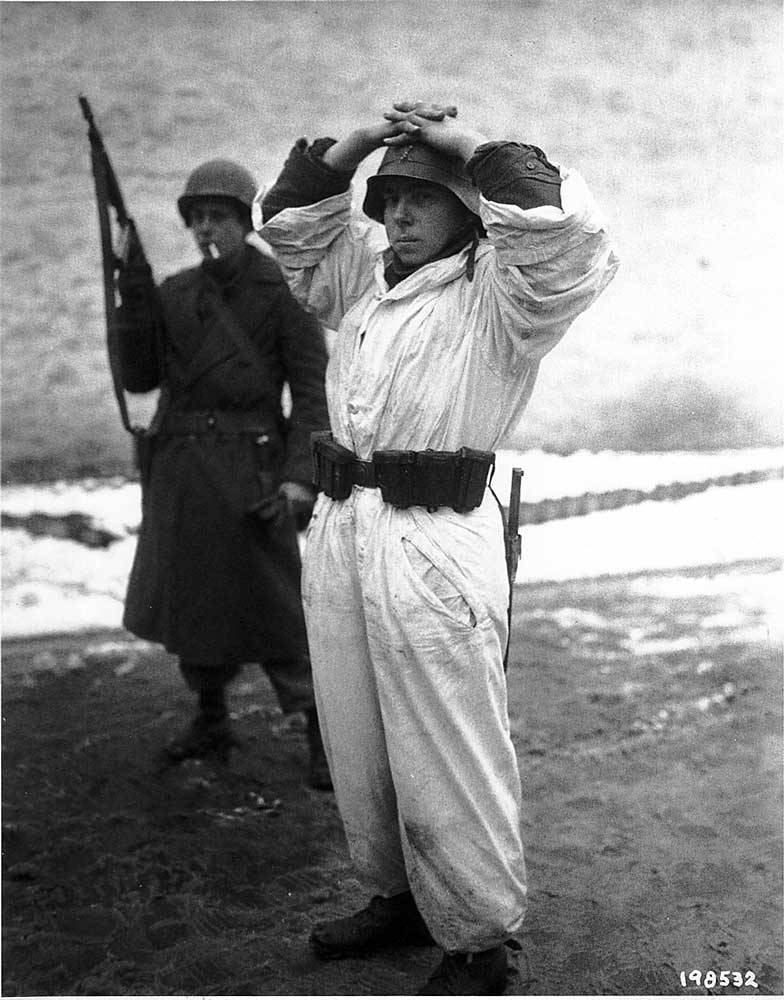
Hitler threw the best men and weapons that he had available against the American troops in the Ardennes.
The battle-hardened German Wehrmacht troops went up against the mostly untried and green elements of U.S. Army and, at the end of the day, the hard-fought victory was in the hands of the Americans. This was due, in no small measure, to the bravery of the G.I.s and the effectiveness of their rifles, carbines, submachine guns, pistols and other weapons that turned the tide of the war in favor of the Allies—and sealed the fate of the Third Reich.













